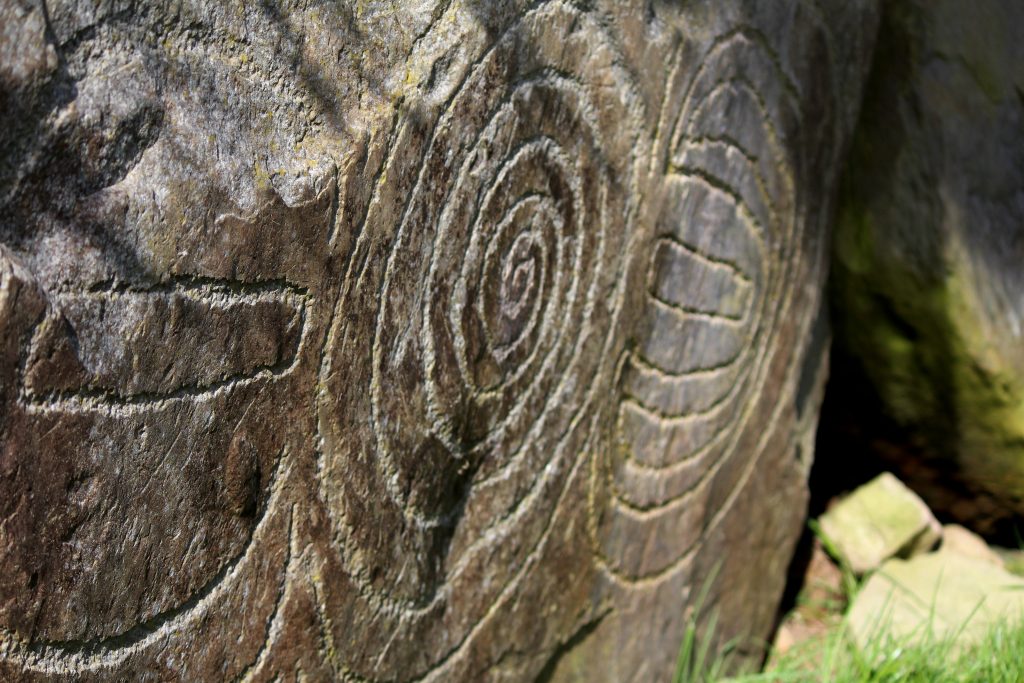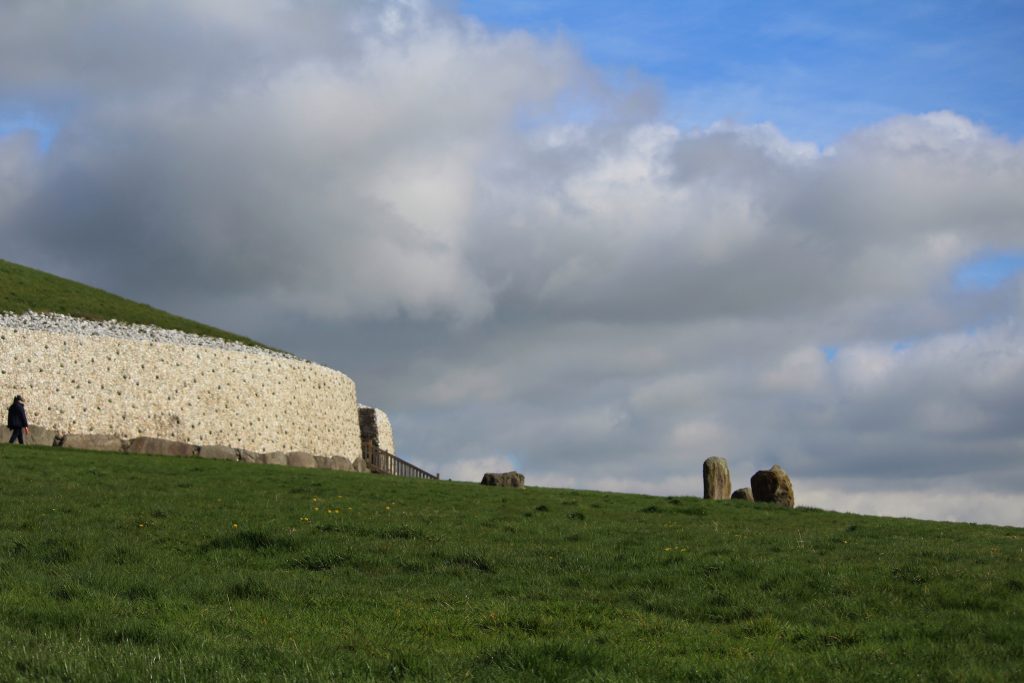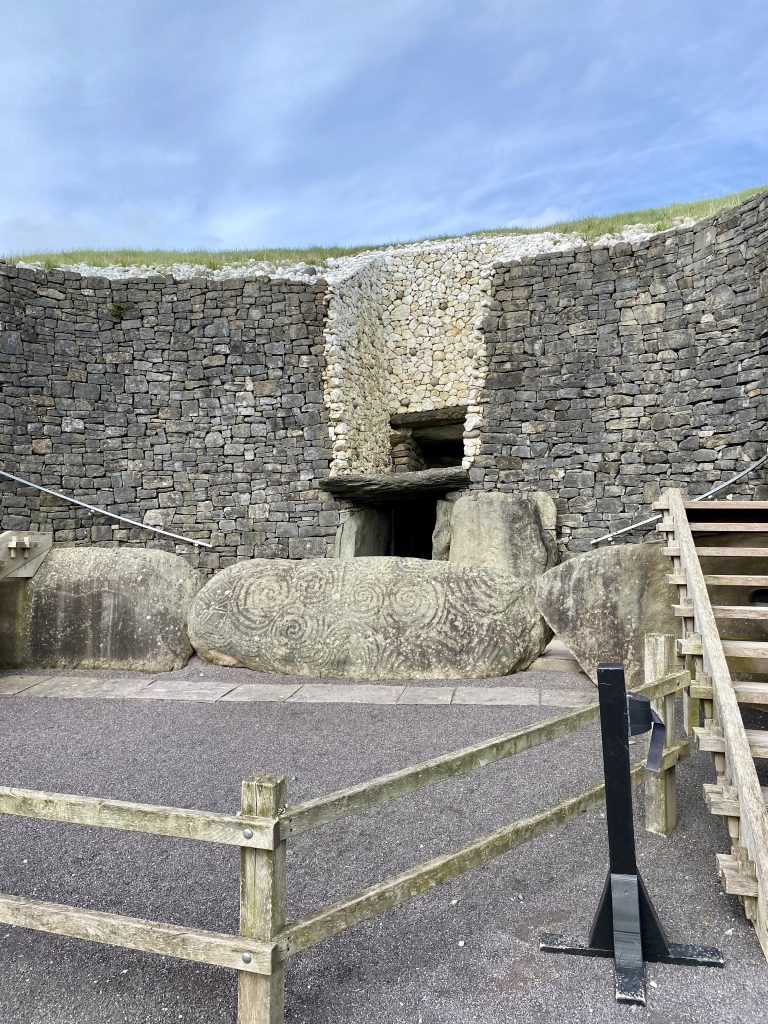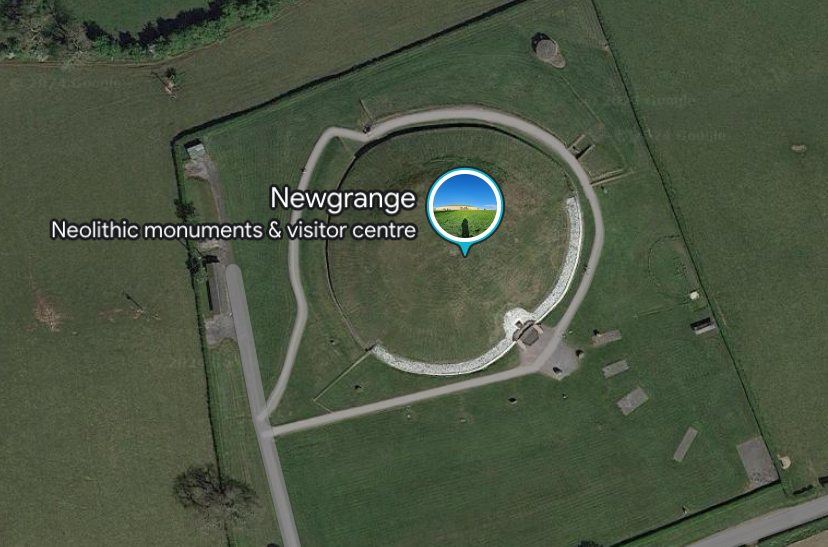The world record for the heaviest weight ever lifted by a human is a staggering 2.4 tonnes. With years of training, specialized dieting, and intensive preparations, this is the greatest weight a single human has ever lifted. And yet, the passage tomb of Newgrange consists of a colossal 97 stone slabs, all weighing more than a tonne, some weighing considerably more.1 These slabs were not merely lifted, but placed together to form a carefully arranged structure which has survived over 5,000 years completely intact. The total cairn is estimated to weigh 200,000 tonnes. And all this would have been done with little more than stone tools.
This raises many obvious and elusive questions around who these ingenious builders were. What was the site’s purpose and why did it remain abandoned and hidden for millennia throughout Irish history?
The puzzle
The literary genre of whodunnits remains one of the most popular forms of fiction. And this World Heritage site, the marvel of ancient Ireland, provides a perfect embodiment of the genre. For despite the many years of labour and minds far superior to mine, we still have far more questions than answers about its origins, purpose, and peoples. And like a good whodunnit, the plot only thickens the more you discover.

Built in 3200BC, Newgrange predates Stonehenge and the Egyptian pyramids. Little is known about the people who originally built it or why. Indeed, much of the ‘history’ which has passed down through mythology and historical records is steeped in biases and folk-beliefs. Ancient kings used the site’s significance to reinforce their own. Myths framed the site’s purpose in line with their own beliefs.
Later attempts to study the site after its rediscovery in 1699 were fraught by an ignorance of Irish history. The decline of the Irish language and political ascendancy of England, meant little progress was made until the 20th century. So it’s to these traditions and histories we now turn.
The mythical setting
Newgrange’s original Irish name is Brú na Bóinne, the house or mansion of the Boyne. And while today the Boyne refers to the River Boyne and the surrounding lands, throughout Irish history it referred to the River goddess Boann or Bóinne. She was the wife of the Dagda, the ‘Good god’, and mother to Oengus, all characters from the family of gods, the Tuatha Dé. The Irish myths speak of these gods as the predecessors to the Gaels or Celts and “who thereafter retreated into the fairy mounds and forts of Ireland”.2

Various versions exist in Irish myths of how Newgrange was claimed by Boann.3 But a recurring theme is of the monument being a house for the ancient gods. Indeed, later kings used this narrative to trace their own lineage back to these same gods, claiming a form of ancestral divinity. For instance, it was widely thought to have been the burial place of pagan Irish kings in pre-Christian Ireland. The veracity of these claims is certainly suspect, but its proximity to nearby Tara is likely no accident. It follows that Newgrange would probably have been revered as a key religious site throughout much of this early Irish period. A good example of this is found in their worship of the sun and naming of the site.
Alignment with the sun
One of the most incredible discoveries surrounding Newgrange was its relationship with the sun. During the sunrise on the winter solstice, the entire 18m deep cavern is slowly filled with basking sunlight. Through a feat of ingenious engineering, the sun’s rays are caught by a slit in a roof-box and reflected throughout the tomb. The significance that this happens at the solstice and centres around the sun is important to note. Indeed, that Dagda was the sun-god is certainly no coincidence given how the Irish worshiped such astral bodies.
But this only compounds our initial puzzle. For all of this mythology is believed to have come later, rather than preceding the building of the monument. It shows us the enduring legacy, not the original purpose or design. To try to understand the significance of the tomb through these myths is, therefore, always going to be at best incomplete, and at worst misleading. This is why we must turn to the archaeological evidence.
House of the dead
The prevailing academic theory today is that Newgrange was a place of the dead and house of the spirits. Several archaeological discoveries support this view. First, the tomb has remarkably remained dry ever since its creation. Through a mix of waterproof mortar, the placement of the structural slabs, and water grooves cut into the stones, the internal tomb is completely watertight. When you enter inside, it is hard not to notice this (particularly in a place as wet as Ireland). And why go to such lengths to keep it dry, unless there was something precious worth protecting?

This brings us to the second point; what was unearthed inside the tomb. Bones, and lots of them. The earliest objects found all relate to rituals of death, whether human bones or associated artifacts. There were over 2,200 pieces of human bone alone (burnt and unburnt).
Based on these finds, one of the site’s leading archaeologists concluded:
“Surely this must mean that the structure was thought of, not merely as a tomb, but as a House of the Dead, in which the spirits would live in dry comfort….The House of the Dead had to be built of great stones so that it should last forever.”4
Significance today
Despite all we now know of this incredible, awe-inspiring monument, it will continue to surprise and confound generations to come. New discoveries continue, with new monuments being unearthed, the links to other neolithic sites explored, and new interpretations of evidence being debated.
Moreover, as one of the foremost tourist sites in Ireland, it continues to shape Irish culture and identity over 5000 years after its creation. A book published by the Irish tourist board in 1993 sums it up far better than I ever could:
“Ireland is a nation with a long memory. It is possible to have conversations with people who speak of events that happened centuries ago as if they themselves were there. Few nations on earth can match this sense of history and historic perspective, which is to be found as much in the land as in the people.”5
Newgrange | IRELAND by Arqueomodel3D on Sketchfab
A modern temple
The site has become a form of religious pilgrimage for many. The wait to visit during the solstice is now years ahead. Like Stonehenge, it has become a site for the modern wave of paganism. But for most, and certainly for me, it’s about something much broader and more unifying. It represents something we can all relate to and share in. One recent visitor recently summed it up well when she said:
“Watching the first rays of sun enter the tomb as they have for more than 5,000 years brought such hope after a year that has sometimes felt hopeless. The commentary was extraordinary…reminding us of the darkness and light felt by all humankind throughout the ages.”
In this way, those who visit the site share a connection that traces back to the earliest of our ancestors. It draws our eyes to the greatness that humanity can achieve when we work together. That, to me, is the answer to this puzzle and one I will remember this historic monument.

Site details
If you plan to visit book ahead. Tickets sell out fast so it’s important to plan your visit in advance. The site takes groups around Newgrange and Knowth on a structured schedule. This means they can only permit a set number in each day. The tickets are also expensive, but they are worth every penny.
Only advice I’d give is to come prepared for the weather. Most of the visit will be outdoors and we all know how unpredictable Irish weather can be.
For tickets and information see: https://heritageireland.ie/places-to-visit/bru-na-boinne-visitor-centre-newgrange-knowth-and-dowth/

Leave a Reply
You must be logged in to post a comment.